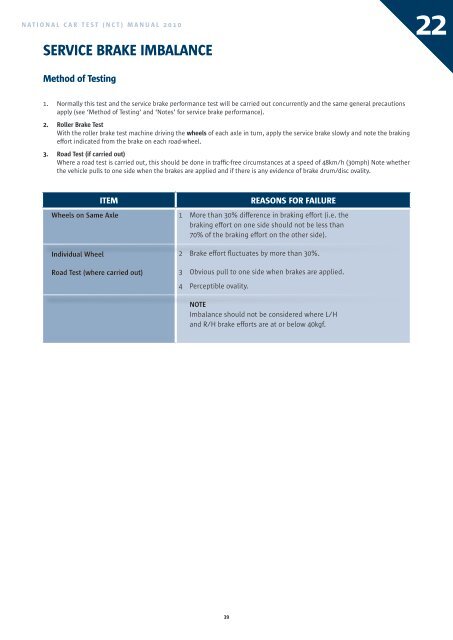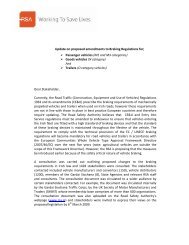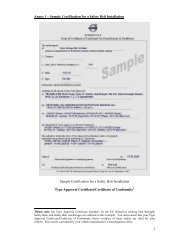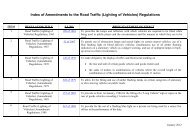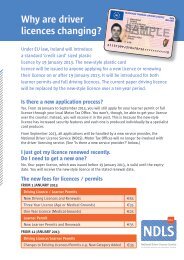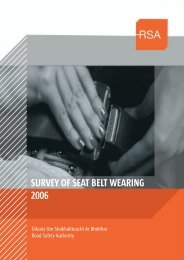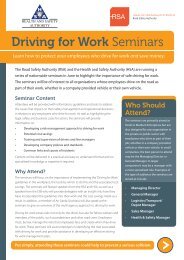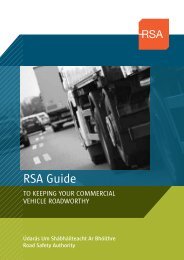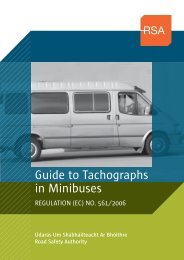(NCT) Manual 2010 - Road Safety Authority
(NCT) Manual 2010 - Road Safety Authority
(NCT) Manual 2010 - Road Safety Authority
Create successful ePaper yourself
Turn your PDF publications into a flip-book with our unique Google optimized e-Paper software.
NATIONAL CAR TEST (<strong>NCT</strong>) MANUAL <strong>2010</strong><br />
22<br />
SERVICE BRAKE IMBALANCE<br />
Method of Testing<br />
1.<br />
2.<br />
3.<br />
Normally this test and the service brake performance test will be carried out concurrently and the same general precautions<br />
apply (see ‘Method of Testing’ and ‘Notes’ for service brake performance).<br />
Roller Brake Test<br />
With the roller brake test machine driving the wheels of each axle in turn, apply the service brake slowly and note the braking<br />
effort indicated from the brake on each road-wheel.<br />
<strong>Road</strong> Test (if carried out)<br />
Where a road test is carried out, this should be done in traffic-free circumstances at a speed of 48km/h (30mph) Note whether<br />
the vehicle pulls to one side when the brakes are applied and if there is any evidence of brake drum/disc ovality.<br />
ITEM<br />
Wheels on Same Axle<br />
Individual Wheel<br />
<strong>Road</strong> Test (where carried out)<br />
REASONS FOR FAILURE<br />
1 More than 30% difference in braking effort (i.e. the<br />
braking effort on one side should not be less than<br />
70% of the braking effort on the other side).<br />
2 Brake effort fluctuates by more than 30%.<br />
3 Obvious pull to one side when brakes are applied.<br />
4 Perceptible ovality.<br />
NOTE<br />
Imbalance should not be considered where L/H<br />
and R/H brake efforts are at or below 40kgf.<br />
39


